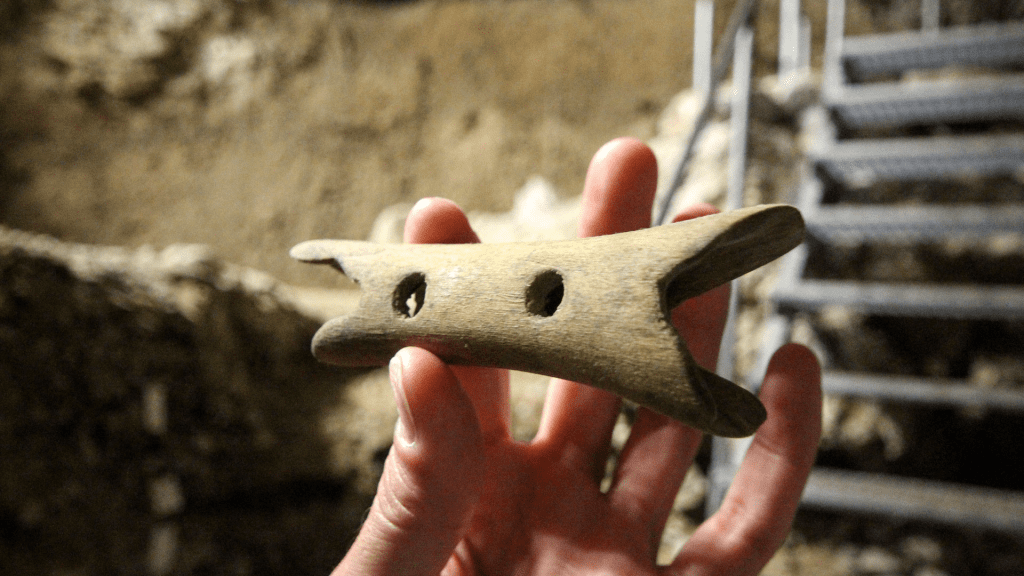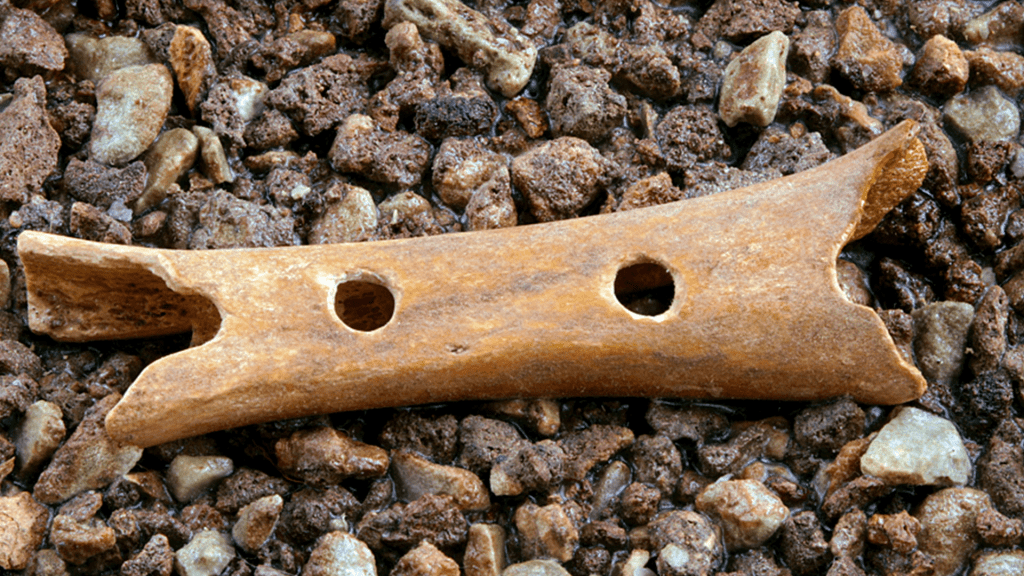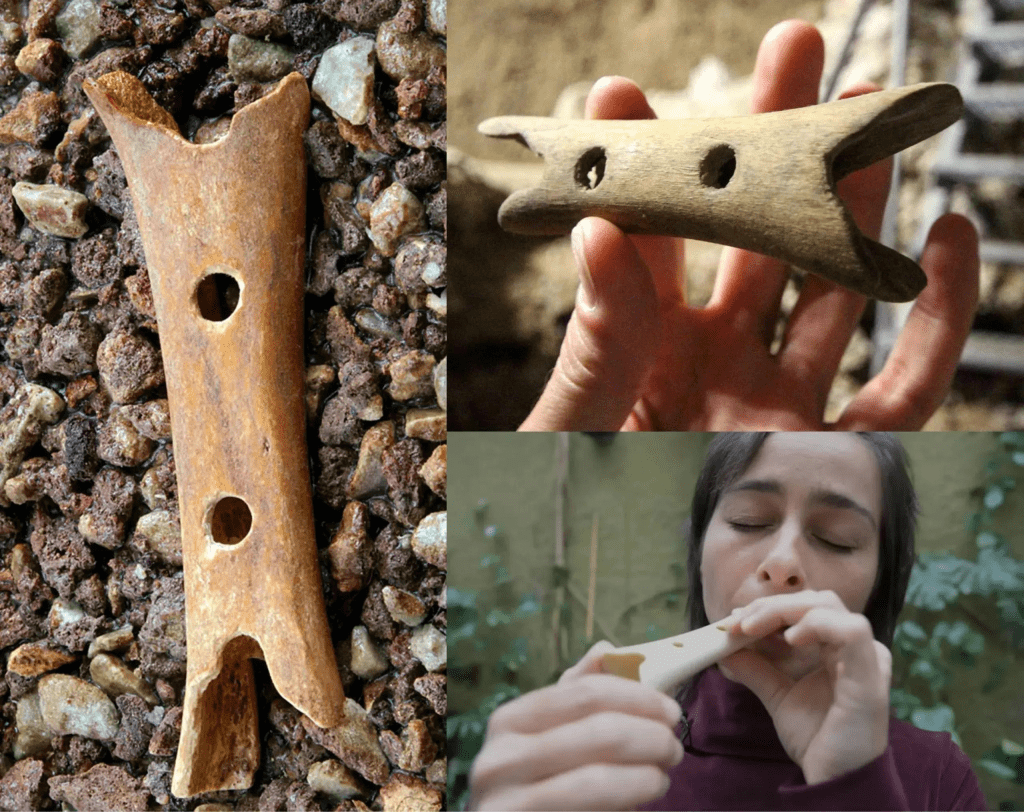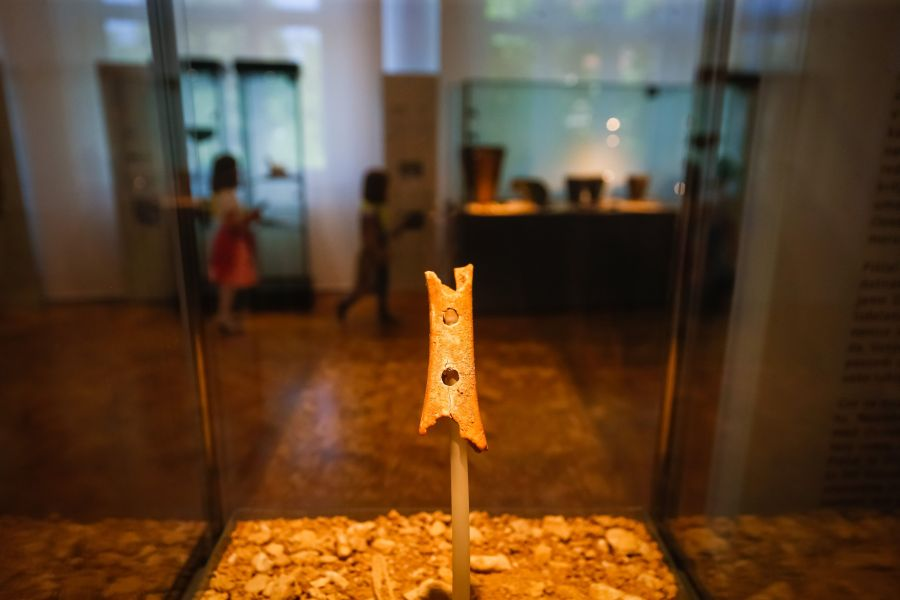In 1995, archaeologists made a stunning discovery inside the Divje Babe cave in Slovenia: a simple-looking fragment of bone that would go on to rewrite part of human history. The object, identified as a piece of a juvenile cave bear’s femur, featured carefully spaced holes drilled along its length. At first glance, it might have seemed like just another archaeological curiosity. But deeper analysis revealed something extraordinary. This was no ordinary bone. It was a musical instrument possibly the oldest flute ever found believed to have been made by Neanderthals between 50,000 and 60,000 years ago.

The Oldest Musical Instrument in Human History?
The age of the bone itself and the archaeological layer it was found in indicate it predates modern Homo sapiens in Europe. That alone was enough to spark intense debates among scientists, historians, and anthropologists. The idea that Neanderthals long thought to be primitive and unsophisticated were capable of making musical instruments challenged generations of assumptions.

The flute has four holes, evenly spaced, and when replicated, it produces notes that match the modern diatonic scale. In simpler terms, you could play a familiar melody on it today, just as someone might have done in that cave tens of thousands of years ago. The spacing of the holes is not random or accidental. It suggests an understanding of pitch and acoustics. For the first time, evidence pointed to Neanderthals not just as survival-focused beings but as people with rhythm, creativity, and maybe even a love for music.
Video:
The 60,000-year-old artefact rewriting Neanderthal history – BBC REEL
A Deep Cultural and Artistic Legacy
The implications of the flute’s discovery go beyond just music. If Neanderthals created musical instruments, then they likely had other cultural expressions as well maybe singing, dancing, rituals, or storytelling. These are the things that define humanity on a deeper level. Culture is more than tool-making or hunting. It is song, rhythm, connection, and emotion. And the flute from Divje Babe speaks to that broader legacy.

Researchers have spent years studying the artifact. Tests ruled out the possibility that the holes were made by animal bites or natural wear. Microscopic analysis supports the idea that they were intentionally crafted, possibly using stone tools. This has helped further cement the case for Neanderthal authorship.
Modern Interpretations and Musical Replicas
Today, replicas of the flute have been made using modern materials and techniques to simulate its sound. Musicians and experimental archaeologists have demonstrated that it can indeed play scales similar to modern instruments. This has captivated not only scientists but also artists, music lovers, and history enthusiasts. The sound is raw and haunting like an echo from an ancient world that still vibrates through time.
Video:
Neanderthal Bone Flute Music
Hearing the flute’s music is more than a novelty. It is a connection to our past. When those notes play, we are reminded that our distant cousins were not as different from us as once thought. They, too, may have found comfort in melody or expression in sound. The discovery humanizes Neanderthals in a way that textbooks and bone measurements never could.
Preserved in Slovenia’s National Museum
Today, the original flute rests in Slovenia’s National Museum, where it draws thousands of visitors each year. It is displayed with reverence, not just as an ancient relic, but as a powerful symbol of prehistoric culture. The exhibit invites people to rethink what it means to be human and how far back our capacity for art and imagination truly stretches.
For Slovenia, the artifact is also a national treasure. It serves as a proud reminder that some of the deepest roots of human creativity may lie within its borders, buried in a cave once filled with life, sound, and song.

A Future Shaped by the Past
The Neanderthal flute from Divje Babe offers more than historical insight. It forces us to confront our assumptions about intelligence, creativity, and culture in ancient times. It challenges the image of the Neanderthal as brutish and silent. Instead, it paints a new picture one filled with the echoes of music, the rhythms of early humanity, and the undeniable truth that even in the harshest Ice Age environments, beauty found a way to sing.
As we continue to explore our prehistoric past, one thing becomes increasingly clear: the story of humanity is more colorful, complex, and musical than we ever imagined.


